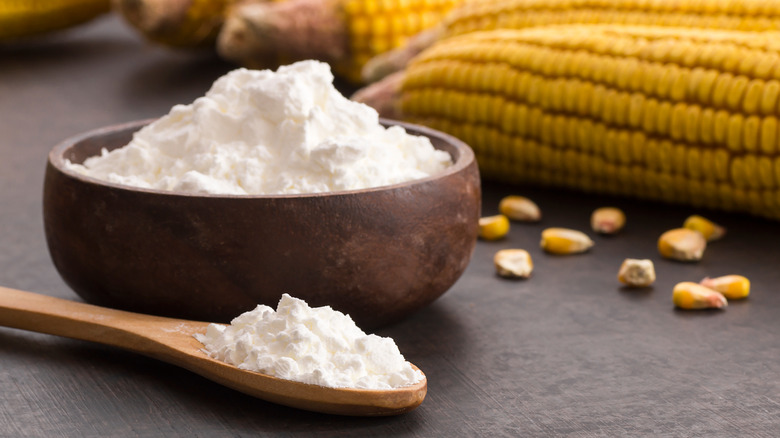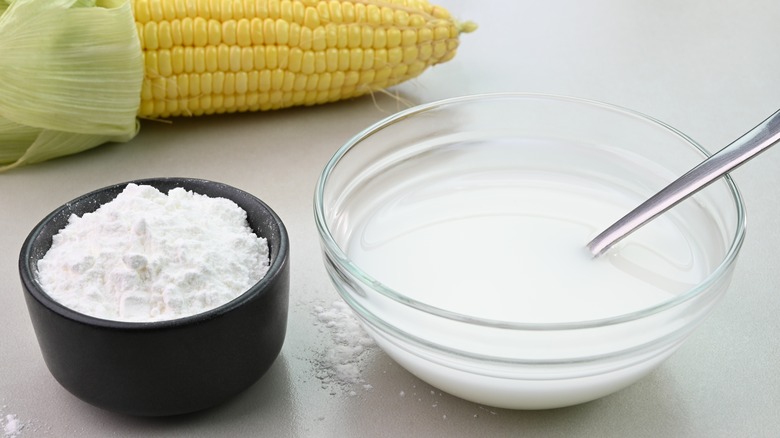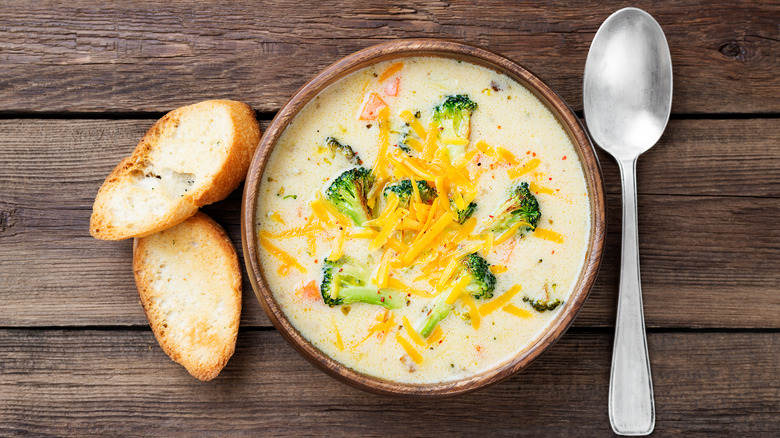The Simple Rule Of Thumb To Thicken Any Liquid With Cornstarch
From pureeing vegetables and adding egg yolks to incorporating flour, gelatin, guar gum, or potato starch, there are numerous ways to thicken sauces, soups, and stews that are too thin. One of the easiest and most effective ways is to use cornstarch.
Cornstarch is an ideal option to use as a thickening agent because it can be used for both savory and sweet sauces. In addition to being twice as effective as flour in thickening, it uniquely enhances sauces with a glossy texture that cannot be achieved by other thickeners.
The one glitch, though, is that cornstarch is ineffective at thickening liquids on its own. Add it straight to your saucy pie filling, savory soup, or simmering stew, and you'll wind up with clumps of it throughout the dish. Instead, follow this rule of thumb: Mix it with water first to create a cornstarch slurry. Then, stir it in slowly to create a luxurious, creamy texture in your dish.
How to make and use cornstarch slurries
A cornstarch slurry is made using a one-to-one ratio of water and cornstarch. In a small bowl, combine one tablespoon of cornstarch with one tablespoon of liquid — you can use water, stock, or milk, depending on the type of recipe you're making. Then, whisk the two together until the mixture is smooth and free of lumps. Once it's ready, simply stir it into the liquid you're trying to thicken.
While it's not advisable to add cornstarch directly to hot dishes, it's crucial to introduce the cornstarch slurry into hot liquids for optimal thickening results. Cornstarch does its best thickening work when heated to 175 degrees Fahrenheit or higher. In his book "On Food and Cooking," food science and cooking expert Harold McGee writes that it is at that temperature that the starch begins to expand and absorb water, as well as release molecules into the liquid, resulting in thickening.
"The swelling granules slow protein binding by absorbing heat energy themselves, and the dissolved starch molecules get in the proteins' way and prevent them from bonding to each other too intimately," McGee explains.
Caveats on using a cornstarch slurry
Cornstarch is an exemplary thickener but it also imparts glossiness to the foods that it thickens. In her book "The Baking Answer Book," former pastry chef Lauren Chattman notes that this makes cornstarch an ideal option for use in fruity baked goods without top crusts. Stir-fries and noodle dishes also benefit from the sheen that a cornstarch slurry brings to the table.
One warning when cooking with a cornstarch slurry is to avoid adding too much, particularly when using it with baked goods. Chattman says that overuse of cornstarch can lend a starchy flavor to a dish.
It's also important to note that there are some dishes that may not thicken when mixed with cornstarch. Foods with a high acid content like tomatoes, citrus fruits, and cranberries, among others, have the potential to react in the opposite way, creating a watery end result.
Finally, when deciding if a cornstarch slurry is the best thickener to use, consider how you're intending to store it after cooking. Dishes made with cornstarch can certainly be refrigerated. However, freezing foods that contain cornstarch can result in a spongy texture when they are thawed.



